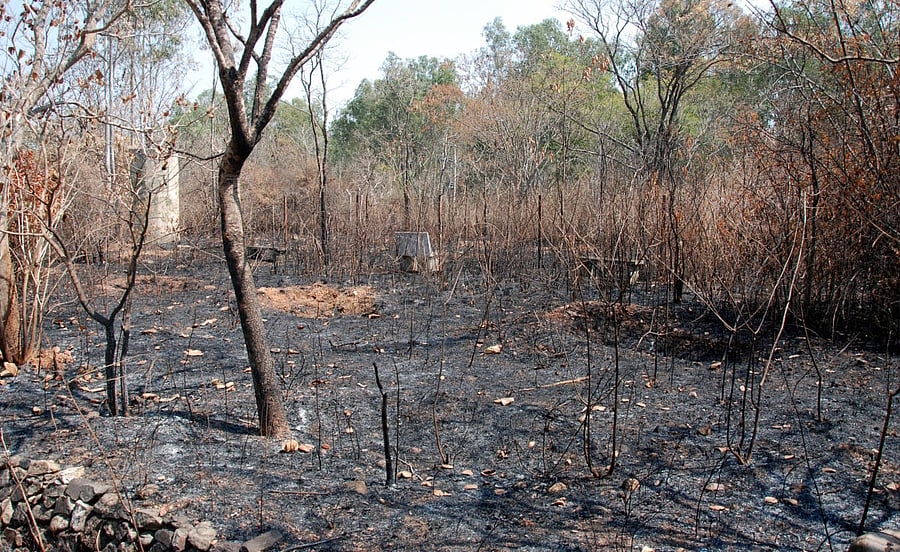The Supreme Court recently directed eviction of forest encroachers whose claims have been rejected under the Forest Rights Act (FRA) 2005. This raised a public furore and the court itself was obliged to stay the operation of its order for the time being. Many people are strongly pleading for amending the FRA to facilitate regularisation of all forest encroachments. This is a serious matter. We only have 21.5% of our geographical area under forest cover against our avowed national goal of 33%. If we lose forests, we will have more ecological disasters, like the recent Kodagu floods. Climate change is looming large and there is clamour all over the world to increase forest cover. India is also spending lot of taxpayers’ money to promote green cover but at the same time losing lakhs of hectares of wooded forests under FRA.
The FRA was conceived primarily to correct historical injustice done to tribal communities. But, somewhere along the way, “other traditional forest dwellers” (OTFD) also got into the Act. They now constitute the bulk of applicants for forest rights. Statistics are not forthcoming at all-India level for a break up of ST and OTFD count. In Karnataka, the ST population constitutes 7% of the state’s total population. STs filed 48,652 applications, or 17.5% of the total 2.79 lakh applications received. The bulk (82.5%) of the applicants are OTFDs. When processed as per FRA Rules, it was found that more than 70% of the cases were ineligible. It is true at the all-India level, too.
As per Ministry of Tribal Affairs (MoTA) data, a total of 42.24 lakh applications were received as of November 2018 in 20 states. Of these, 38.33 lakh (91%) were examined and disposed by FRA authorities. Of the 40.77 lakh individual claims, 37.16 lakh were examined and 51% (18.94 lakh) could not be supported. Rights over 41.81 lakh acres of forest land was given to 18.22 lakh individuals. About 53% of community right claims did not have the required evidence. Still, 92.08 lakh acres were given for exercising community rights. Overall, forest rights have now been recognised over 134.90 lakh acres as per FRA. This constitutes 7.7% of reserved forest land of the country. What is under encroachment is about 2-3 times more. If we enlarge the scope of FRA, extend its deadline or reconsider rejected claims, we will lose a quarter of our forests. Whether the nation can afford to is a point to ponder over.
As for the tribal land holdings, the MoTA 2017-18 annual report has some interesting information. As per NSS 70th round, conducted in December 2013, tribal households who constitute 11.3% of rural population in India are now holding 13.06% of cultivated land.
The average land-holding of ST household is 0.65 ha, compared to the national average of 0.6 ha. Part of this could be due to FRA. Giving more land will not help them. They have to be enabled to make better use of the land they already have. Nevertheless, no forest officer will grudge more land rights being given to forest-dependent tribes because they know the forests better. They have been the guardian angels in case of forest fires, theft of trees and poaching of wild animals, etc. The problem is surely with OTFDs. This is a political question being addressed wrongly under the cover of FRA.
FRA is a strange law, driven by MoTA. It has been embroiled in paradoxes of sorts from day one. The first paradox is that MOTA is set to distribute rights on land which does not belong to them. It is like my neighbour renting a part of my land property and warning the lawful custodians to behave. What do they lose? So, they can be, and have been, liberal with it. They have no mandate for forest protection and conservation. Somebody else has to answer for that.
Secondly, MoTA has no mandate for the OTFD, who constitute the bulk of applicants and encroachers. Jurisprudence in forest settlement is well laid out. Other communities are fully aware of their rights and they have claimed them, too. In fact, many of them hold chunks of forest lands under privileges like kane, bane, kumki, etc. Until the Forest Conservation Act, 1980, came into force, revenue authorities had the right to grant forest lands. Innumerable grants on forest lands have been made to OTFD. So, where is the ‘historical injustice’?
Nevertheless, FRA is concerned about OTFDs who could not get their rights recognised for three generations! Such cases are exceptions and records are difficult to come by. OTFDs are politically strong and well connected. They have other viable livelihoods. Very few are dependent on forests. If we recognise forest rights for OTFD, because agriculture is uneconomic and susceptible to wildlife damage, these lands will end up as resorts, destroy the surrounding forests. FRA is a good smokescreen for destroying forests.
Rewriting forest laws
A third and bigger paradox is that MoTA is set to rewrite forest laws of the country. FRA has been taken to such an extreme that if anyone encroaches forest land today and submits an application to the local Grama Sabha, he/she can’t be evicted till the application has been considered by three different FRA committees over several years. This is what is actually happening today in the forests, courtesy FRA. Forest officers stand bereft of their powers.
Politicians strongly support FRA because people vote, not trees and animals. FRA has come in as a tool to demolish 150 years of conservation efforts in the country. Forest departments will be left with the glorious job of maintaining false statistics because the legal status of forest land will not change under FRA even if the entire forest land is lost!
(The writer is a former Principal Chief Conservator of Forests, Karnataka)
